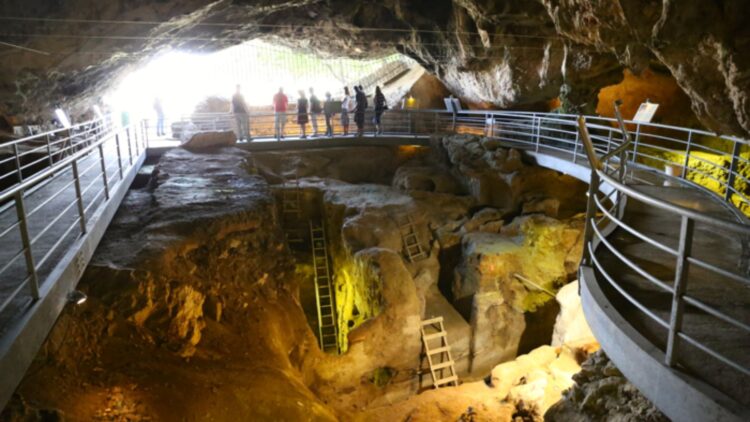Goodbye to what we thought we knew about black holes NASA detects one spinning at 80% the speed of light, leaving astrophysicists speechless
Goodbye Honda recalls more than 259,000 cars in the United States after detecting a defect that compromises the braking system these are the affected models
No glass ceiling, no inequality these are the 40 cities where women earn more than men
A human-made structure older than the pyramids in Egypt!Greece is once again the place where a discovery was made, specifically in a cave called Theopetra, where scientists discovered the oldest structure built by humans in the world. Even before the pyramids of Egypt, almost 23,000 years ago, this stone wall was constructed!
Tools, fire, and child footprints were discovered since this cave was inhabited for thousands of years. This finding further demonstrates that humans were already capable of building things and adjusting to their surroundings at that time.
Let’s find out more about this historic building, shall we?
The most ancient structure known
Theopetra Cave, which is situated in the Thessaly region, is a unique location for human history. This place has caught scientists and archaeologists attention because of a structure built by humans, but not any structure the most ancient in history!
A stone wall
The structure we are talking about is a stone wall built by humans about 23,000 years ago, which means it was made around 16,000 years before the construction of the Great Pyramid of Giza in Egypt. Among the most well-known monuments worldwide is this one.
The discovered construction wasn’t just a simple stone pile; it is thought that the wall was constructed with a definite purpose in mind: to partially block the cave’s entrance. Why? Because during the Ice Age, people most likely wished to shield themselves from the bitter cold.
How can scientists estimate the construction s age?
Scientists used a method called Optically Stimulated Luminescence (OSL) to estimate when was the last time mineral grains, like dust or sand, were exposed to the sunlight. This aids in determining the age of buried or sun-protected materials, which is how scientists arrived at the conclusion that the structure was constructed about 23,000 years ago.
The use of the cave
This cave is not only important because of the ancient structure found inside, archaeologists have seen that Theopetra was inhabited for more than 13,000 years. This indicates that from the Upper Paleolithic to the Neolithic, humans inhabited the area for a very long time.
On the cave’s floor, archaeologists also discovered artifacts from several eras, including campfires, stone tools, and kid’s footprints.
What happened after Theopetra?
There wasn t another human-made structure until thousands of years after the stone wall. The next discovery was the Atalh Y K, a village in Turkey that had been occupied by 7,400 BCE. This was considered one of the first cities to be organized.
From this vantage position, further megalithic constructions, such as the globally renowned Stonehenge in England, were discovered in Europe that were constructed between 5,000 and 3,000 BCE.
Importance of this ancient stone wall
As you can see, this structure has altered archaeologists’ perceptions of the earliest construction attempts. They now understand that humans were clever, imaginative, and socially structured enough to alter their environment and construct shelters in order to live, even earlier than they previously thought.
Visiting the Theopetra Cave
Since the cave is an ancient location and is replete with evidence of previous civilizations that were able to thin, plan, preserve, and live in community, it is currently open to the public. So, the cave must be protected, so that archaeologists can keep studying it and learn more about human evolution.
Who would have thought this simple structure at first sight was going to be so important in our time? We may learn a great deal about ancient civilizations from this wall, which is essential for future scientific research.




